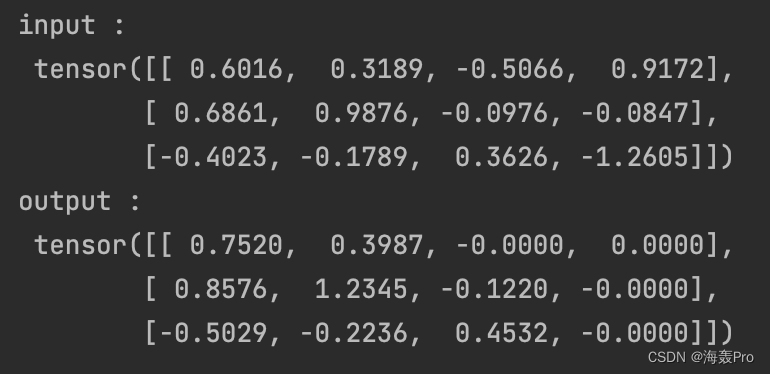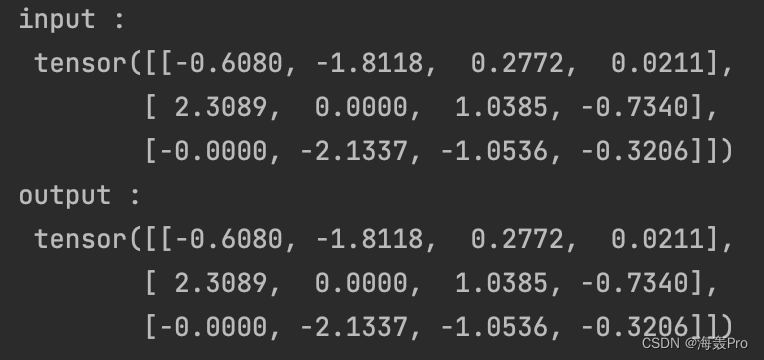-
【Pytorch】torch.nn.Dropout()

简介
Hello!
非常感谢您阅读海轰的文章,倘若文中有错误的地方,欢迎您指出~
ଘ(੭ˊᵕˋ)੭
昵称:海轰
标签:程序猿|C++选手|学生
简介:因C语言结识编程,随后转入计算机专业,获得过国家奖学金,有幸在竞赛中拿过一些国奖、省奖…已保研
学习经验:扎实基础 + 多做笔记 + 多敲代码 + 多思考 + 学好英语!
唯有努力💪
本文仅记录自己感兴趣的内容torch.nn.Dropout()
语法
torch.nn.Dropout(p=0.5, inplace=False)
- p:元素归零的概率。 默认值:0.5
- inplace : 如果设置为 True,将就地执行此操作。 默认值:False
个人理解:以概率p进行归零
作用
在训练期间,使用来自伯努利分布的样本以概率 p 将输入张量的一些元素随机归零,每个通道将在每次前转呼叫时独立归零
During training, randomly zeroes some of the elements of the input tensor with probability p using samples from a Bernoulli distribution. Each channel will be zeroed out independently on every forward call.
这已被证明是一种用于正则化和防止神经元共同适应的有效技术,如通过防止特征检测器的共同适应改善神经网络一文中所述
This has proven to be an effective technique for regularization and preventing the co-adaptation of neurons as described in the paper Improving neural networks by preventing co-adaptation of feature detectors .
此外,在训练中输出的比例为 1 1 − p \frac{1}{1-p} 1−p1 。 这意味着在评估期间,模块只计算一个恒等函数。
举例
m = nn.Dropout(p=0.2) input = torch.randn(3, 4) output = m(input) print('input : \n', input) print('output : \n', output)- 1
- 2
- 3
- 4
- 5
- 6

inplace=True时
m = nn.Dropout(p=0.2, inplace=True) input = torch.randn(3, 4) output = m(input) print('input : \n', input) print('output : \n', output)- 1
- 2
- 3
- 4
- 5
- 6

参考
- https://pytorch.org/docs/stable/generated/torch.nn.Dropout.html#torch.nn.Dropout
结语
文章仅作为个人学习笔记记录,记录从0到1的一个过程
希望对您有一点点帮助,如有错误欢迎小伙伴指正

-
相关阅读:
lock和synchronized的区别
中小学数学卷子自动生成程序
metastore启动问题
lingo为什么不能运行该代码
python3-循环与条件语句
Qt 学习(三) —— Qt 模块
lwIP 开发指南(下)
JS中ES5和ES6的区别
什么才是Web测试?让我来告诉你~
hdfs分布式文件系统 默认数据存放路径、及相关配置属性详细解析
- 原文地址:https://blog.csdn.net/weixin_44225182/article/details/126655288